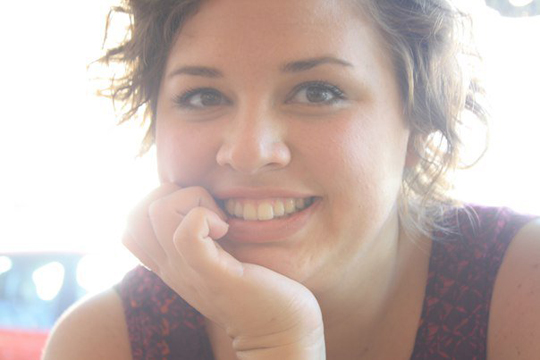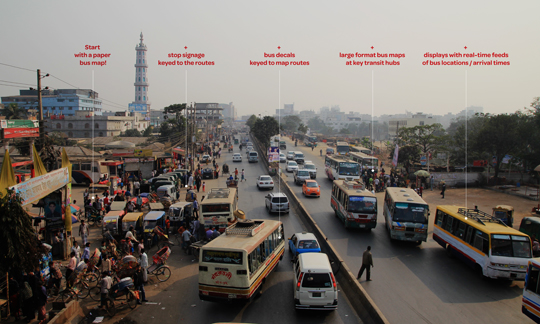 Ansley Whipple is the Foundation Programs Director at Worldstudio, whose primary initiative is Design Ignites Change; this program provides support for designers and architects engaged in social impact projects with awards, educational outreach, mentoring opportunities and fiscal sponsorship.
Ansley Whipple is the Foundation Programs Director at Worldstudio, whose primary initiative is Design Ignites Change; this program provides support for designers and architects engaged in social impact projects with awards, educational outreach, mentoring opportunities and fiscal sponsorship.
Ansley received an MA from Parsons the New School for Design’s History of Decorative Arts and Design Program. Currently, she currently teaches a recitation section for Clive Dilnot’s lecture class, Design for this Century.
Ansley thinks the world would be a much better place if designers used their powers for good and not evil and she wants to help make this happen however she can. Her experience with other organizations include communications facilitation for desigNYC—a non-profit dedicated to improving the lives of New Yorkers through the power of good design—and serving as member of the sustainability committee at the Cooper-Hewitt National Design Museum. Prior to moving to New York City, she was the Director of Operations at the Museum of Design Atlanta after receiving a BA in Industrial Design at the Georgia Institute of Technology.
2013 Design Ignites Change Professional Fellowship winning project, “Designing Dhaka’s Bus Infostructure,” by Stephen Kennedy. This project is an ambitious information- and service-design initiative to help Bangladeshi citizens receive and interpret real-time bus information in the midst of Dhaka’s chaotic street scene. Photo credit: Stephen Kennedy.
What current project are you at work on?
As Programs Director of Worldstudio Foundation, my primary job is to run Design Ignites Change, a program that provides support to designers, architects and creatives that are or want to be engaged with social impact projects. We just found out that we received funding for this upcoming program year from Adobe Foundation, so we’re beginning to roll out our offerings. This includes: a Student Innovation Award; a Professional Fellowship; a series of webinars on the nuts-and-bolts of getting involved with social impact work; college scholarships for minority or economically disadvantaged designers and artists; and new this year is a Faculty Award, which will provide funding for a faculty member to implement a social impact project with his or her class.
What inspired this project?
Worldstudio has been directly involved with socially-conscious design since it’s founding in 1993, but in recent years there has been a large influx of designers becoming jaded with the traditional client model of the profession, and becoming interested in using their skills to work with communities. Design Ignites Change was co-created in 2009 with Worldstudio Foundation and Adobe Foundation to fit the growing need in the design community to help with this transition, to support their efforts and to create a community through increased visibility around this interest. The sector of designers interested in social impact continues to grow and mature in their practices and our program develops along with it to meet the needs of our audience.
If you’re pursuing more than one project, are you finding connections between these pursuits, or do they feel separate?
I am currently just working on Worldstudio Foundation projects, but have many ideas for side projects, all of which are connected to design and social impact. Not only is social sustainability and design my passion, but I have been privileged to meet and collaborate with many of the leaders in this sector of the design community. So, I anticipate future projects to be connected to this community in one way or another.
Do you find connections between these projects and your current, future, or recent work for Parsons?
Absolutely. My thesis project for the History of Decorative Arts and Design MA program, “Understanding the Impact of Social Design Practices in Hale County, Alabama,” was an amazing opportunity that gave me a robust academic foundation on the topic of social sustainability, which continually informs the real-world development of Design Ignites Change and serves to legitimize my involvement in this sector. I also currently TA for Clive Dilnot’s class, Design for this Century, which reinforces the need for and abilities of design to address the world’s critical “wicked” problems.
How have New York’s resources contributed to your current work?
As it happens, New York City is one of the two main geographical hubs for the social impact design community (the other being San Francisco). Living and working here allows me a tremendous amount of networking and educational opportunities in this specific field, and in pretty much any relevant tangentially-related field. It is very beneficial for the Foundation to be located here because, even though technology increasingly allows for meaningful non-geographical based connections, the successful partnerships we make tend to have a component of relationships built on in-person interactions. This is much easier to develop and maintain living in New York City.
Is this your first project of this kind? What unique challenges and discoveries are presenting themselves?
I have worked at small non-profits before, which I find have their own set of challenges. With limited resources, there is a strong need to be the “jack of all trades” (and the struggle to avoid the “master of none” part of that cliché). It makes for an exciting work environment with unlimited opportunities for growth and education, but also frustrating at times to encounter countless limitations in either knowledge or resources.
If this project is part of a long-term interest, how have you seen your work shift through time?
I began working at Worldstudio Foundation part time while I was in grad school at Parsons and have been here almost 4 years total, which I don’t think should count as long-term but in today’s creative industry climate is actually somewhat long-term compared to many colleagues and peers. In this time, I have seen both a growth of interest from designers engaged in social impact work and maturity in the work they are doing; designers are becoming more thoughtful and informed about how to best work with communities, make ethical decisions and contribute to long-term, sustainable positive social impact. As the creative community develops their social impact practice, we simultaneously develop the ways we support them. For example, we previously offered support primarily to college and university students, but in 2013 we expanded our support to professional designers though our Professional Fellowship and our educational outreach programs.



























